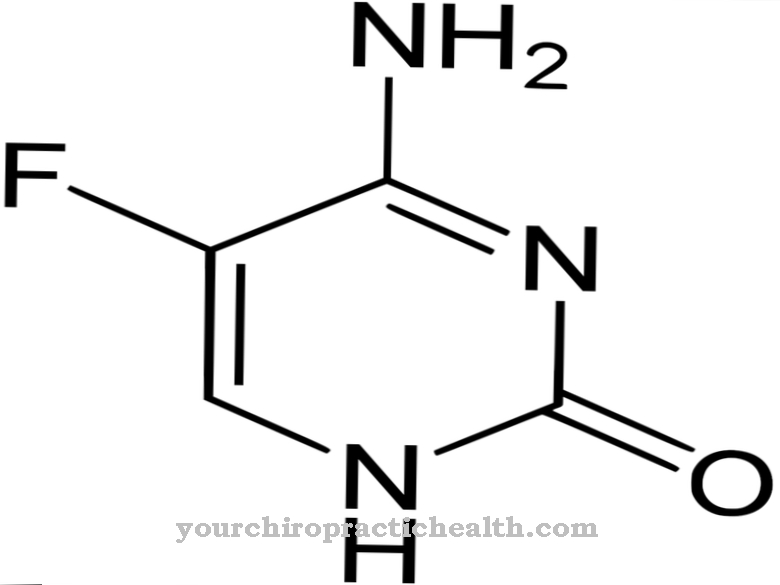Theophylline is one of the most important active ingredients for the treatment of respiratory diseases. It is particularly used for the therapy of bronchial asthma.
What is theophylline?

The drug theophylline comes from the group of purinal alkaloids and is derived from xanthine. The name theophylline can be traced back to tea leaves. The German doctor Albrecht Kossel (1853-1927) succeeded in isolating small amounts of the substance from tea leaves in 1888. Theophylline is also found in coffee beans, guarana, and cola nuts, albeit in small amounts. In the human metabolism, theophylline acts as a breakdown product of caffeine.
Around 1895, the German chemist Emil Fischer (1852-1919) managed to synthesize theophylline, starting with 1,3-dimethyl uric acid. The grape synthesis described by the chemist Wilhelm Traube (1866-1942) in 1900 represents a chemical synthesis process that is still used today.
Theophylline was initially used therapeutically as a diuretic medicine. From 1921 the active ingredient was also introduced into the treatment of angina pectoris. Theophylline has been an integral part of the treatment of bronchial asthma since 1922. From the 1970s, theophylline preparations came onto the market, which release the active ingredient with a delay, which meant that asthma patients could be treated permanently. However, theophylline later became less important with the introduction of beta-sympathomimetics and glucocorticoids.
In nature, theophylline always occurs together with other purine alkaloids. These primarily include caffeine and theobromine. The theophylline content is highest in guarana at 0.25 percent.
Pharmacological effect
Theophylline is one of the xanthine derivatives and has different effects. The drug inhibits the breakdown of the neurotransmitter CAMP. This, in turn, causes the smooth bronchial muscles to relax and makes breathing easier. At the same time, the activity of the cilia increases, which leads to an increased removal of mucus.
The inhibition of the messenger substance adenosine within the bronchial muscles is also important. This allows the bronchi to widen and relax. Another effect is the blocking of adenosine in the brain. Because adenosine is also responsible for regulating sleep, there is a risk of having sleep problems when using theophylline.
Furthermore, theophylline slows down the release of histamine. The neurotransmitter histamine is increasingly released in the human body in the context of allergies and infections. Histamine mediates inflammatory reactions and constricts the bronchial muscles. By blocking the messenger substance, the inflammatory symptoms in chronic bronchitis or bronchial asthma are reduced. However, theophylline's anti-inflammatory properties are weaker than those of glucocorticoids.
After the theophylline has been administered orally, the active substance is absorbed into the intestine via the blood. The breakdown of the drug takes place in the liver, while the breakdown products leave the body via the kidneys.
Medical application & use
Theophylline is mainly used to treat moderate and severe asthma. The drug is often combined with glucocorticoids and beta-2 adrenoceptor agonists. Theophylline is suitable for both the prevention and therapy of asthma attacks. Other areas of application are chronic bronchitis and chronic obstructive pulmonary disease (COPD). The remedy can also be used in cases of emphysema (overinflation of the lungs) and chronic pneumonia.
The correct dosage of the drug plays an important role in the use of theophylline. An optimal effect of the preparation depends on this. For this reason, the agent is usually taken in the form of capsules or prolonged-release tablets, which ensure continuous release of the active ingredient. In this way there are always constant amounts of theophylline in the patient's blood. The daily dose varies from patient to patient. Since theophylline is subject to a prescription, the drug can only be obtained from pharmacies on presentation of a doctor's prescription.
You can find your medication here
➔ Medication for shortness of breath and lung problemsRisks & side effects
By taking theophylline, undesirable side effects are also possible. In most cases, the heart rate is accelerated, the heart palpitations, sleep problems, restlessness, tremors in the limbs, headaches and low blood pressure. Sometimes cramped bronchi, fever, hives, skin reactions or a reduction in blood platelets are also possible.
Health problems can also be caused by excessive theophylline doses. This manifests itself as an abrupt drop in blood pressure, seizures such as epilepsy, severe gastrointestinal complaints associated with bleeding, cardiac arrhythmias and damage to the muscles. Since theophylline has a negative effect on the ability to react, participation in road traffic should be avoided.
Theophylline must not be administered at all if the patient is hypersensitive to the drug or if there is an acute cardiac arrhythmia. The same applies to a recent heart attack. If the patient suffers from unstable angina pectoris, severe high blood pressure, diseases of the heart muscle, an overactive thyroid, porphyria, gastric or intestinal ulcers, epilepsy, kidney or liver dysfunction, the attending physician must carefully weigh the risks and benefits.
When theophylline is used together with other drugs, there may be interactions. This applies in particular to the contraceptive pill, beta-2 sympathomimetics, the H2-receptor blockers ranitidine and cimetidine, the worming agent tiabendazole, calcium channel blockers such as diltiazem and verapamil, macrolide antibiotics such as erythromycin, the gout drug allopurinol, and the beta-blockers propranolol these have an intensifying effect on theophylline.
On the other hand, weakening effects occur through the intake of barbiturates, anti-epileptic drugs, the gout drug sulfinpyrazone, the antibiotic rifampicin and St. John's wort.



























